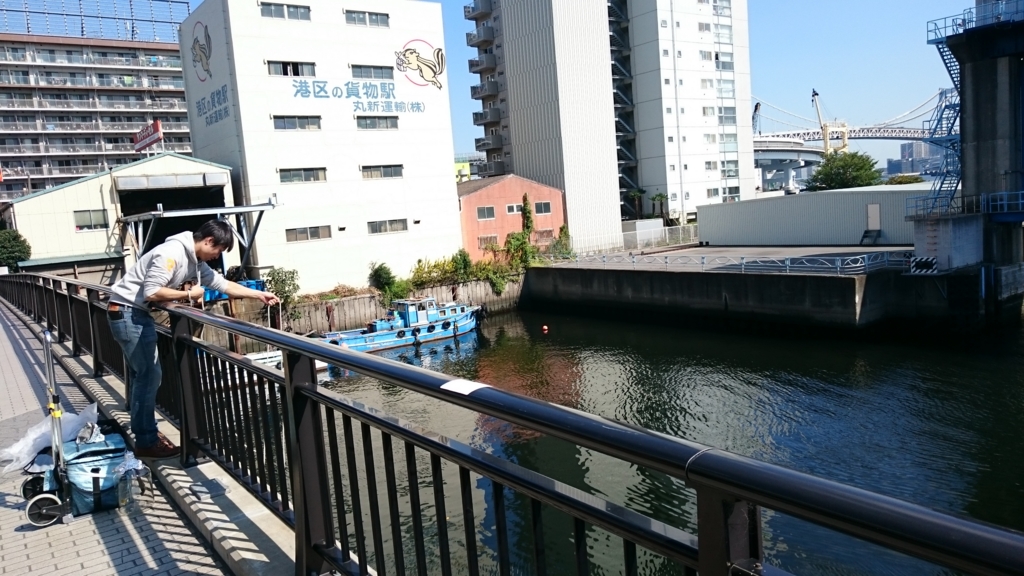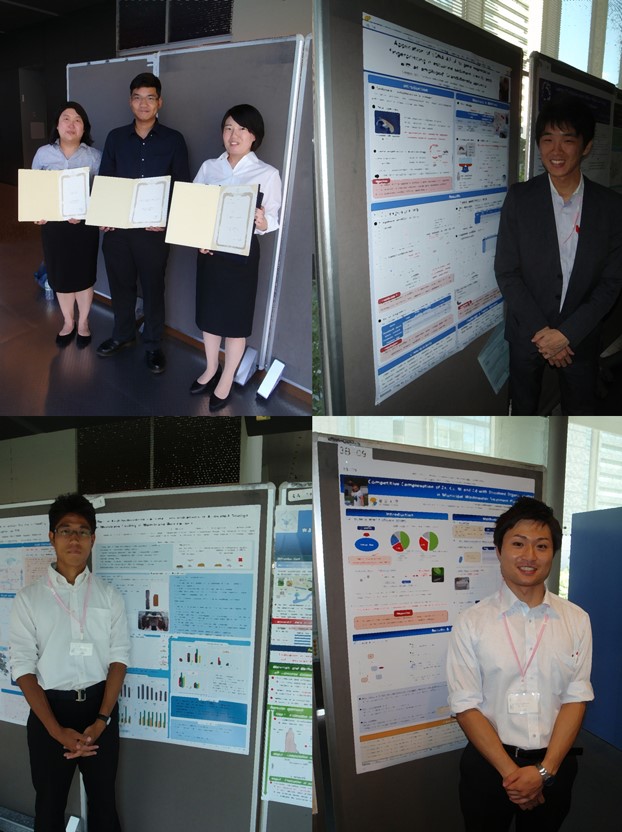Almuni party 2015
先週、研究室の同窓会を開催しました。現役生・卒業生含め総勢35名の方々に集まっていただきました~。みなさん、ありがとうございました!
We had a party for our lab alumni last weekends. We had totally 35 participants. Thank you !

K. HIKI
論文紹介のやり方 ~How to introduce research papers~
今回は卒論生~M1向けの記事です。
Mainly for bachelor's and M1 students.
研究室のメンバーが定期的に集まって、論文を紹介しあう。
論文セミナーとかジャーナルクラブとかの呼び名で、多くの研究室でやられていることだと思います。本研究室でも、Lab meetingと言ってほぼ毎週おこなっています(参考:今学期のLab meetingスケジュール)。
We introduce research papers to other lab members in Lab meeting. This article is about "how to introduce research papers".
有意義で快適な"論文紹介"のために…
学部生やM1にとって、論文紹介は地獄のような時間かもしれません。ぶっちゃけ僕がM1の頃はそう感じてました…。
というのも自分が論文紹介をする時は、
- (自分で選んだくせに)論文が理解できてない
- 先生からの鋭い突っ込みに答えられない
- 英語がうまく話せない
- 「誰も自分の紹介論文に興味なさそう」という被害妄想が生まれる
- または本当に論文の選択が悪い
- そもそもどういう論文を紹介すべきか分かってない
、、、などなど暗澹たる状況でした。
そして他人の発表を聞く時は
- 壊滅的に内容が分からない
- もはや何が分からないのかすら分からない
- ていうか発表者と自分との研究内容違いすぎ…
- 笑われそうで質問もできない
- ただただ時間が過ぎるのを耐え忍ぶのみ
、、、という状態でした。
しかしここ2~3年でようやく地獄から天国になった、かどうかは分かりませんが、とにかく結構楽しめるようになってきました。
楽しめるようになった最大の理由は、先に身も蓋もないことを言うと、読んだ論文数とか発表回数とか、量をこなしたことだと思います。とは言え「お前らもあと2~3年経てば俺のところまで来れるぜww」ではあまりにもアレなので、今回は論文紹介を有意義かつ快適に過ごすためのコツ?を僕なりに紹介したいと思います。

注:以下に書いてある内容は研究室の公式見解ではなく、日置の私見です。ご指摘・お叱り・賛辞等は私個人までお願いします。
目次
1. そもそもなぜ論文紹介をするのか?
2. どういう論文を選ぶべき? How to choose a paper?
3. どうやって準備をすべき? How to prepare?
4. どのように発表を聞くべき? How to listen a presentation?
5. リンク
続きを読む
卒業生によるSpecial seminar
●渡部さんによるプレゼン
本専攻を卒業後、国立環境研究所にて研究員として働いていらっしゃる渡部さん。
研究室ミーティングにお招きして研究を紹介していただきました。
研究内容は難しく感じましたが、非常に勉強になりました。
●夜はパーティー
いろんなお話を伺うには飲み会も必要ですよね♪
またの機会にお会いできることを楽しみにしています!

M.Y
Seawater sampling @ Shinagawa
先日、品川駅近くまで海水のサンプリングに行ってきました~。すごく良い天気で、長袖だと暑いぐらいでしたね。
We went to Shinagawa for sampling of seawater. It was a very fine day!


▲Pictures of seawater sampling
K. HIKI
Lab Meeting in 2015 Winter
こんにちは、日置です。
今学期も本研究室では、所属教員・学生が集まってのミーティングをほぼ毎週行います。(前学期のミーティングに関してはこちら参照。)
Also in this semester, Lab Meeting will be held to share the knowledge of each student/researcher. All students and researchers in our laboratory are expected to attend this meeting.
スケジュール Schedule
毎回、論文紹介(または各自の研究の進捗報告)を順番におこないます。今学期はスペシャルゲストにも来ていただく予定です*1!
I would like all presenters to introduce a scientific paper or their own research progress. The schedule is shown in the following table. We have a special guest in this semester ...

紹介された論文たち Papers introduced in the meeting
以下は、Lab meetingで紹介された論文です。随時更新します。
- Clark S.L. et al., 2015, Comparative sensitivity of field and laboratory populations of Hyalella azteca to the pyrethroid insecticides bifenthrin and cypermethrin, Environ. Toxicol. Chem., 34(10), 2250-2262.
- Palma P. et al., 2016, Ecotoxicological endpoints, are they useful tools to support ecological status assessment in strongly modified water bodies?, Sci. Total Environ., 541, 119-129.
- Cooper C.A. et al., 2013, Influence of salinity and dissolved organic carbon on acute Cu toxicity to the rotifer Brachionus plicatilis, Environ. Sci. Technol., 48, 1213-1221.
- Li H. et al., 2015, Effects of Tris (1,3-dichloro-2-propyl) Phosphate on growth, reproduction, and gene transcription of Daphnia magna at environmentally relevant concentrations, Environ. Sci. Technol., 49(21), 12975-12983.
- Campana O. et al., 2012, Sub-lethal effects of copper to benthic invertebrates explained by sediment properties and dietary exposure, Environ. Sci. Technol., 46, 6835-6842.
- Bhattacharjee A.S. et al., 2015, Bacteriophage therapy for membrane biofouling in membrane bioreactors and antibiotic‐resistant bacterial biofilms, Biotechnol. Bioeng., 112(8),1644-1654.
- Pavlaki M.D. et al., 2014, Changes of chemical chronic toxicity to Daphnia magna under different food regimes, Ecotoxicol. Environ. Safety, 109, 48-55.
- de Boer T.E. et al., 2015, Combined transcriptomics analysis for classification of adverse effects as a potential end point in effect based screening, Environ. Sci.Technol., 49(24), 14274-14281.
今学期に紹介された8本中4本がESTだったようです。
さらに追記。2016年度の夏学期に紹介された論文たちです。
- Taylor N.S. et al., 2016, Predicting chronic copper and nickel reproductive toxicity to Daphnia pulex-pulicaria from whole-animal metabolic profiles, Environ. Pollut., 212, 325-329.
- Piggott M.P., 2016, Evaluating the effects of laboratory protocols on eDNA detection probability for an endangered freshwater fish, Ecol. Evolution, 6(9), 2739-2750.
- Lee S., 2016, Crossing the Border between Laboratory and Field: Bacterial Quorum Quenching for Anti-Biofouling Strategy in an MBR, Environ. Sci. Technol., 50(4), 1788-1795.
- de Haas E.M. et al., 2004, Combined effects of copper and food on the midge Chironomus riparius in whole-sediment bioassays, Environ. Pollut., 127(1), 99-107.
- Halpern B.S. et al., 2012, An index to assess the health and benefits of the global ocean, Nature, 488(7413), 615-620.
- Wold S. et al., 2001, PLS-regression: a basic tool of chemometrics, Chemometrics Intell. Lab. Systems, 58(2), 109-130.
- Burgess R., 2001, An improved protocol for separating meiofauna from sediments using colloidal silica sols, Mar. Ecol. Prog. Ser., 214, 161-165.
- Yates E.A. et al., 2002, N-acylhomoserine lactones undergo lactonolysis in a pH-, temperature-, and acyl chain length-dependent manner during growth of Yersinia pseudotuberculosis and Pseudomonas aeruginosa, Infection and Immunity, 70(10), 5635-5646.
- Barnes M.A. et al.,2014, Environmental conditions influence eDNA persistence in aquatic systems, Environ. Sci Technol., 48(3), 1819-1827.
- Nye J.A. et al., 2013, The relative impact of warming and removing top predators on the Northeast US large marine biotic community, Ecol. Modelling, 264, 157-168.
K. HIKI
*1:引き受けて下さって本当にありがとうございます!今から楽しみです。
WET 2015 conference
8/5-6に日本大学で開催されたWET2015(Water and Environment Technology Conference 2015)に参加してきました。
We attended WET2015 held at Nihon University on 5th and 6th August.
本研究室のNiyommaneeratさんと柳原さん、日置、そして古米研のPhungsaiさんが「The WET Excellent Presentation Award」を受賞しました!
Wilailuk Niyommaneerat, Miina Yanagihara, Phanwatt Phungsai and I got "The WET Excellent Presentation Award".

▲Our lab members in WET2015
K.HIKI
